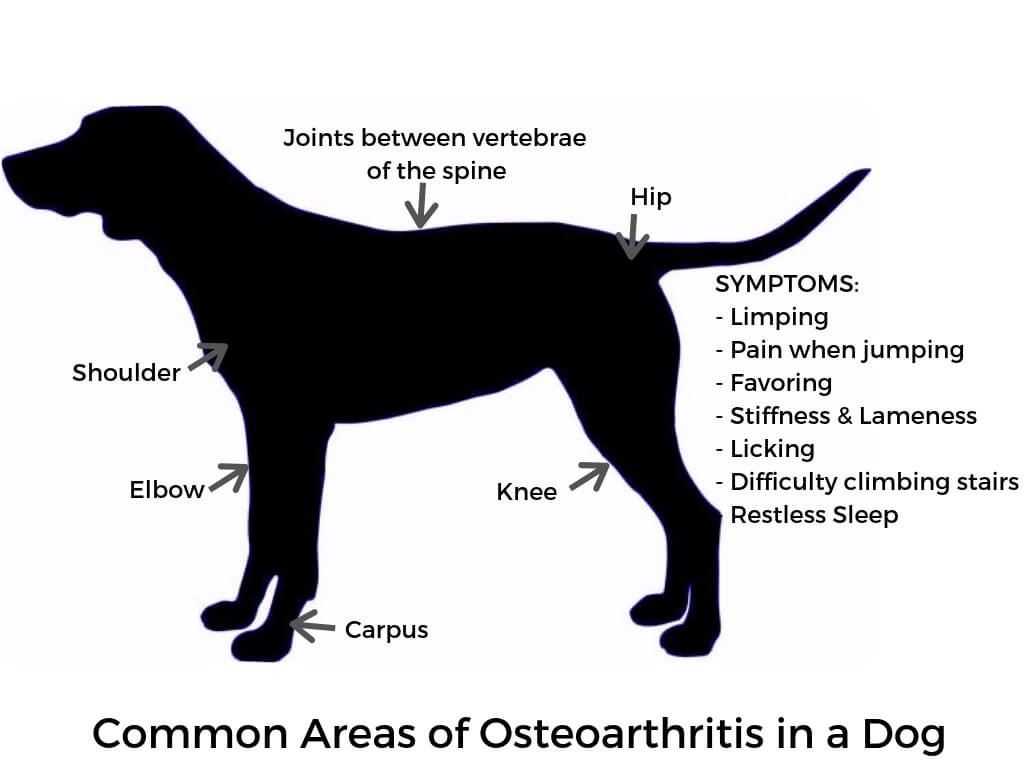The difficulties of mobility, such as lameness, are themselves symptoms of a dog suffering from osteoarthritis, a degenerative joint disease. But certain patterns can be achieved to improve the welfare and quality of life can. Here’s what dog arthritis, signs of the disease, its treatment and five tips for improving the quality of life of a dog with this condition.

What is osteoarthritis in dogs?
The Canine Osteoarthritis is a joint disease of progressive (symptoms worsen over time), degenerative and may be congenital. This condition causes the loss of cartilage structure, responsible for joint mobility. As with people, the discomfort and symptoms resulting from dog arthritis aggravated by cold and humidity and summer heat. Therefore, with extreme temperatures, the animal’s condition worsens suffering from osteoarthritis.
So it is important to have adequate knowledge about osteoarthritis because it is a grave condition that any dog can be afflicted with irrespective of the breed so its symptoms have to be gauged in the early stages itself so that it can be treated accordingly otherwise it would prove difficult for the poor canines to manage it on their own and this article would explain it perfectly.
The joints of a dog that has arthritis are not as flexible as or thicker than those of a healthy dog. Cartilage structure is lost or worn and causes discomfort when the animal moves. Hence limp or costing up, lie down or climbing stairs. Osteoarthritis in dogs resulting therefore in lameness, difficulty walking, climbing stairs, slowness of movement. The shock or trauma in joints also favors the formation of this disease that can be localized to a particular joint or be generalized across the cartilage.
The causes that influence the onset of osteoarthritis can be hereditary, as in the case of hip dysplasia or elbow in dogs.
The obesity is also a risk factor for the dog suffering from osteoarthritis. Overweight Overloading joints that wear out and deform more rapidly than in the case of a dog that has an appropriate weight for their age and size.
Addition, accelerated in large breed puppies growth also influences the greater predisposition to osteoarthritis. To avoid this, we recommend moderate exercise during the development and growth of the animal. A proper and balanced diet, that is, adapted to the size, age and level of physical activity performed by the puppy, it is also essential to ensure a smooth and gradual bone growth.
Vitamin supplements for dogs and excess calories in the diet, promote the growth of large size puppy at an accelerated pace. Therefore, we must take into account that “good quality feed adapted to the characteristics of the puppy does not need vitamin supplements promote the emergence of joint problems,” says Ignacio Arija, veterinarian and expert in canine nutrition.
Osteoarthritis in dogs and its size
Osteoarthritis affects mostly large dogs such as German shepherd or rottweiler. The older dogs also are more likely to develop osteoarthritis, the wear of the joint cartilage. If the factor of race with large elderly joins size, the result is a dog with a better chance of getting osteoarthritis.
“Big dogs tend to suffer more joint problems that small,” says Juan Antonio Aguado, veterinarian and professor at the Complutense University of Madrid. In fact, large dogs live shorter lives than smaller ones, due to problems in their joints.
The flat dogs like boxer or bulldog, also are more predisposed to osteoarthritis. “These are breeds that type of breeding that has been subjected abnormal development of joints,” explains María González, Veterinary Association Animal Equality.
Canine osteoarthritis is treated with anti-inflammatory drugs and minerals, vitamins and collagen to nourish the cartilage and prevent fraying and deformed. “The treatment is preventive, palliative, anti-inflammatory and analgesic, but not curative, because osteoarthritis is a chronic disease,” says Aguado.

The important thing when the dog is suffering from osteoarthritis avoids, insofar as possible, the inconvenience resulting from the disease and achieves the highest possible quality for the patient.
